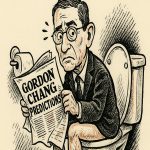
A Startling Question on Strategy and Sudden Shifts
June 7, 2025
What if the boldest move in investing isn’t some genius forecast, but just questioning the tools we worship—strategy, planning, thinking—as if they’re all separate things? Think about the investor who crafts a perfect game plan in January, every bullet point crisp and forward-looking, only to watch it fall apart by April. Meanwhile, someone else, less obsessed with having it all mapped out, reacts fast, adapts to the mood, sees the panic for what it is, and wins.
That clash exposes something most people ignore: the idea that planning and thinking aren’t separate lanes. They’re not. They’re both driven by psychology, especially under pressure.
Look back at 2008. While most people were frozen or dumping everything in fear, a few outliers were buying hand over fist. Why? Not because their plans said, “Buy during global panic,” but because they knew how crowds behave. They recognised that the fear was overdone, the prices were irrational. That wasn’t random luck—it was a blend of preparation and gut-level agility. They had plans, yes—but they also had the flexibility to bend them. That’s the difference. Not planning vs. thinking. It’s the ability to shift.
Let’s be honest—plans look great in calm times. However, market history is a graveyard of perfect blueprints that were destroyed by volatility, euphoria, or panic. The people who survive and thrive? They’re the ones who can read the room—who can smell when the narrative is cracking. And they’re not guessing. They’re following rules—just not blindly.
You don’t throw out a long-term plan when fear spikes. You use it. However, you also need to watch for when it needs to evolve in real-time. That dance—between structure and instinct—is the real edge.
Timing Isn’t a Clock—It’s a Pulse
Here’s the problem: people treat planning like it’s gospel, and thinking like it’s guessing. Both are wrong. The difference isn’t academic—it’s behavioural. In fast-moving markets, lines blur. Even the most detailed plan fails if it doesn’t account for how panic spreads or how greed distorts logic. Investors aren’t machines—they’re part of a swarm. And that swarm reacts to headlines, gossip, and FOMO.
Take a property boom. Rates are low, media is pumping “safe asset” stories, and everyone’s piling in. A solid plan might suggest growing real estate exposure gradually. But if the herd is stampeding, and you forget to question the sentiment underneath it, you’re just fueling the madness. You’ve planned—but you haven’t thought.
Strategic thinking doesn’t mean shooting from the hip. It means being alert to emotional tone, watching for cracks. Keeping one hand on your original plan and one eye on the street. When reality shifts, the thinker moves first—not because they panic, but because they’ve already built room to pivot.
Remember 2000? Dot-com fever. People baked in four-year projections, just as tech stocks were expected to climb forever. When revenue forecasts started slipping, and companies with no business model were IPO-ing every week, that should’ve been the cue. But most stuck to the script—and got slaughtered. A few stepped aside, hedged, or rotated early. Not because they “knew”—but because they were paying attention to the tone, not just the numbers.
The Real Play: Adaptation Under Pressure
Markets don’t care about your planning retreat or that spreadsheet you spent six weekends perfecting. When the mood turns, it turns fast. Fear crushes boldness. Euphoria erases memory. If your plan says “buy property steadily” but prices have tripled and everyone’s quoting TikTok landlords, the plan needs a pause button.
And when panic hits—when blood is in the streets—you better not be paralysed by a fixed agenda. The thinkers are ready. They’ve gamed out worst-case scenarios. They’ve kept cash on the side. They buy when everyone else is hiding under the desk.
2008 again: the institutions that adapted survived. The ones stuck chasing targets from last year? Dead weight. Funny thing is, the adaptive ones didn’t toss the plan—they had better plans. Realistic, flexible, psychologically tuned. They planned for the chaos. That’s not just smart—it’s tactical awareness.
The same applies to individuals. Let’s say you’ve got a DRIP setup—buying index funds every month. Great. Then a crash hits. Do you freeze? Or do you double down? If you trust the baseline, you keep buying—but maybe you push more capital in while things are on fire—same plan. Better timing.
When the Crowd Screams, Think
The key isn’t a flashy insight. It’s guts under pressure. When prices sink, the screens are bleeding, and everyone’s yelling recession, you lean on your plan, but you also trust your pulse. Is this fear justified, or is it overdone? Are people selling because fundamentals broke, or just because they’re scared of headlines?
Same in a bubble. If it feels too easy, if people are gloating about 5x gains, if the waiter has a crypto tip—you don’t need to time the top perfectly. You need to lighten up, take something off the table, protect the downside. That’s not abandoning a plan. That’s thinking.
Real strategy isn’t some locked-in formula. It’s a mindset that absorbs shocks and recalibrates fast. Planning is what gets you into the ring. Thinking is what keeps you from getting knocked out.
The ones who win long-term aren’t just thinkers or planners. They’re both. But above all, they know when to shift—when the mood flips, when the herd runs, when the story changes.
And they move. Fast.
When Planning Turns Into a Crutch
The obsession with planning is often fear in disguise. A polished document gives people the illusion of control, like a sword on the wall; no one remembers how to swing it. It looks noble, but under stress, it’s dead weight. The truth is, most people don’t plan to act—they plan to avoid acting. It becomes a ritual, a shield from reality, a way to say “I thought this through” when the market guts them anyway.
The smarter move is knowing when to ignore your script. That’s not impulsive—it’s survival. A good plan serves the moment. A bad one demands the moment to serve it.
Most failures in strategy don’t come from a lack of vision—they come from being too in love with a vision that no longer fits. People would rather go down with a plan than adjust and look wrong. Pride doesn’t pay. You get one shot at timing an inflexion point. If you miss it because you were waiting for the plan to tell you it’s okay, you weren’t strategic—you were bureaucratic.
Plans Don’t Trade the Market—You Do
A plan can’t hear panic in someone’s voice. A plan doesn’t watch volume spike while sentiment collapses. A plan doesn’t feel that strange, calm before the storm when everything seems “fine”, but your instincts say something’s off. Only you can catch that. Only you can act.
This is where most break. They want certainty before acting. They want consensus. They want confirmation from experts already behind the curve. They don’t see that the game is psychological positioning, not information. The first to reposition wins. The one who waits for data to confirm it bleeds.
The irony? People cling to plans to feel smarter, but the smartest move is sometimes admitting the plan no longer applies. What worked last cycle can bury you in this one. If you’re still using a hammer while the terrain calls for a scalpel, it’s not strategy—it’s stubbornness wrapped in tradition.
Real Strategy is Cold-Blooded Compassion
There’s something almost merciless about smart strategy. Not cruel—but unemotional. You care about your outcome more than your narrative. You don’t owe consistency to your past self, especially if your past self was wrong. That version of you was operating with less data, less insight, and less wear and tear. If you have to contradict him to survive, so be it.
You don’t stay in a burning house just because you helped build it.
And yet, this isn’t about abandoning principle. It’s about knowing which principles adapt, and which are dogma dressed as discipline. Adaptation isn’t disloyalty to your plan—it’s loyalty to your mission.
The Crowd is the Noisiest Signal
There’s a pattern: the moment everyone agrees, the game is already shifting. When confidence turns into certainty, that’s when fragility creeps in. And most investors—retail, fund managers, institutions—will chase safety straight off a cliff if it’s dressed up in enough jargon.
The herd doesn’t ask if it’s right. It asks who else is doing it. That’s not thinking—it’s camouflage.
The contrarian isn’t some edgy rebel by default. They just know that safety isn’t always where the crowd gathers. And they understand that being early looks a lot like being wrong, for a while. But there’s an art to timing the rejection of consensus without becoming a permanent outsider who just enjoys losing money in style.
The trick? Don’t rush to fight the crowd. Wait until the crowd can no longer think. Then move.
Conclusion: Planning is a Tool, Not a Throne
There’s a quiet confidence that comes with knowing your plan is flexible. It means you’re not panicking when others are frozen. But more importantly, it means you’re not married to your last decision. You don’t need to defend every step. You’re playing the whole game, not just your previous move.
Use plans like armour—put it on when you need protection, but drop it when it slows you down. Think in real time, act with your mind, and understand that survival isn’t about who had the best PowerPoint last quarter. It’s about who saw the edge forming and stepped there—alone—before the rest caught on.
No applause. No medals. Just results.
That’s real strategy. Not the stuff framed on a wall—but the kind that works when things get ugly.












